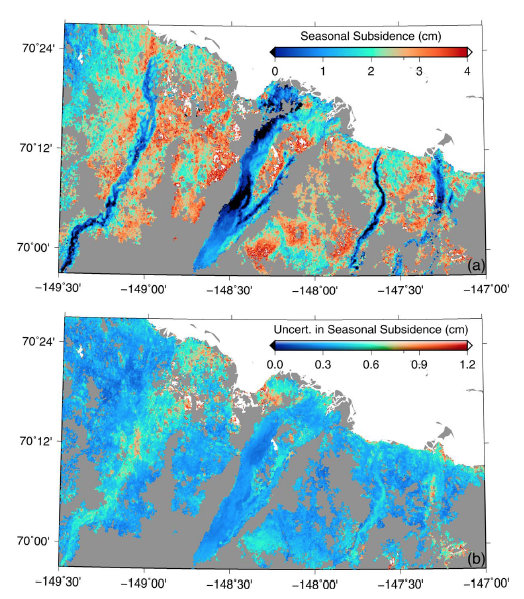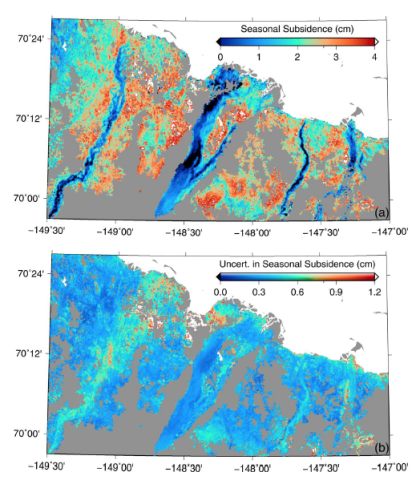Pre-ABoVE: Remotely Sensed Active Layer Thickness, Barrow, Alaska, 2006-2011 and Pre-ABoVE: Remotely Sensed Active Layer Thickness, Prudhoe Bay, Alaska, 1992-2000.
These data sets include the mean Remotely Sensed Active Layer Thickness (ReSALT) and subsidence plus uncertainty from 2006 to 2011 for the region near Barrow, Alaska and for the years 1992 to 2000 for Prudhoe Bay, Alaska. The data were produced by an Interferometric Synthetic Aperture Radar (InSAR) technique that measures seasonal surface subsidence and infers active layer thickness. These data demonstrate the effectiveness of InSAR for monitoring the active layer over large areas of the Arctic coastal plain.
The Arctic-Boreal Vulnerability Experiment (ABoVE) is a NASA Terrestrial Ecology Program field campaign that will take place in Alaska and western Canada between 2016 and 2021. Climate change in the Arctic and Boreal region is unfolding faster than anywhere else on Earth, resulting in reduced Arctic sea ice, thawing of permafrost soils, decomposition of long-frozen organic matter, widespread changes to lakes, rivers, coastlines, and alterations of ecosystem structure and function. ABoVE seeks a better understanding of the vulnerability and resilience of ecosystems and society to this changing environment. In 2012, several Pre-ABoVE projects were awarded for data set development in support of the ABoVE field campaign.
To view complete documentation and access the data, visit the data set Web pages at http://daac.ornl.gov/cgi-bin/dsviewer.pl?ds_id=1266 and http://daac.ornl.gov/cgi-bin/dsviewer.pl?ds_id=1267
Data Acknowledgements
- Data authors: Liu, L., K. Schaefer, A. Chen, A. Gusmeroli, E. Jafarov, S. Panda, A. Parsekian, T. Schaefer, H. A. Zebker, and T. Zhang
- Data center: ORNL DAAC (http://daac.ornl.gov)
- Sponsor: NASA EOSDIS (http://earthdata.nasa.gov)
- Data Set DOIs: http://dx.doi.org/10.3334/ORNLDAAC/1266 and http://dx.doi.org/10.3334/ORNLDAAC/1267


